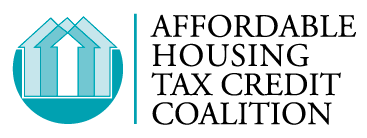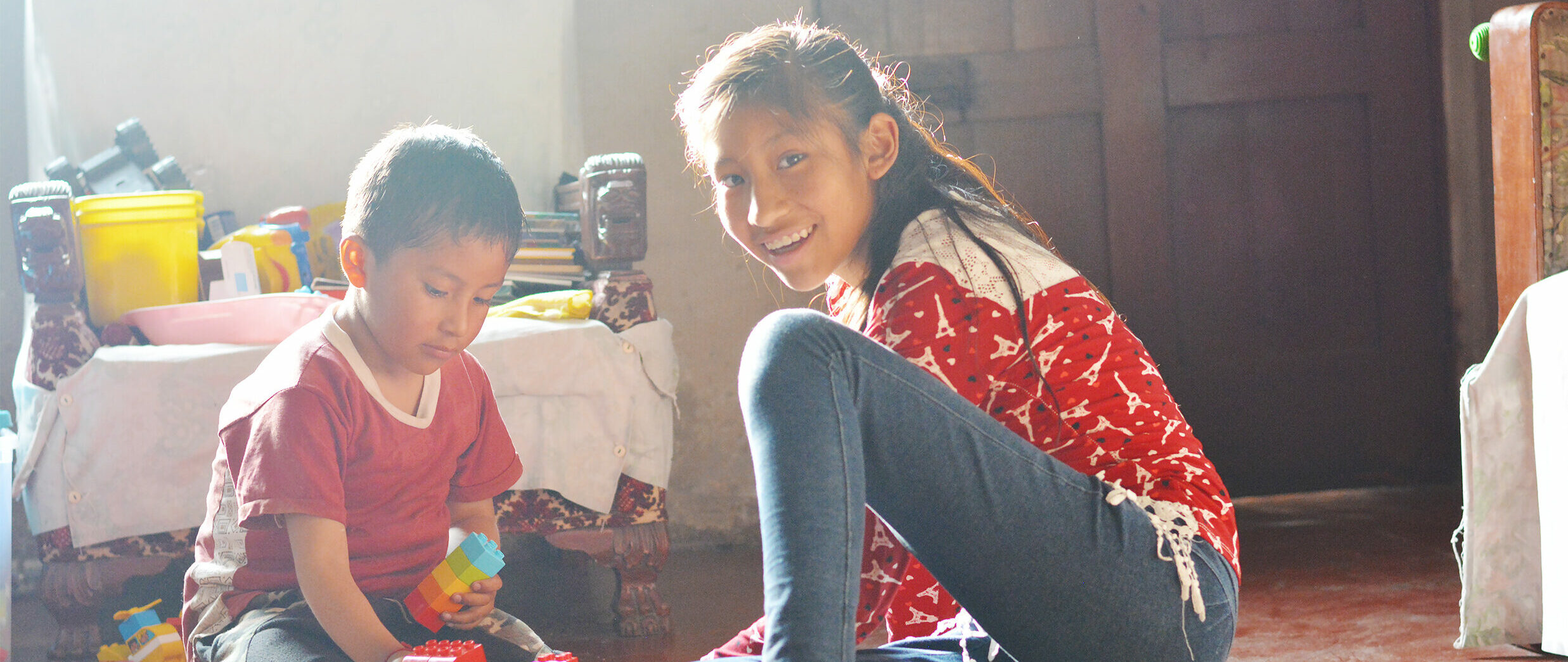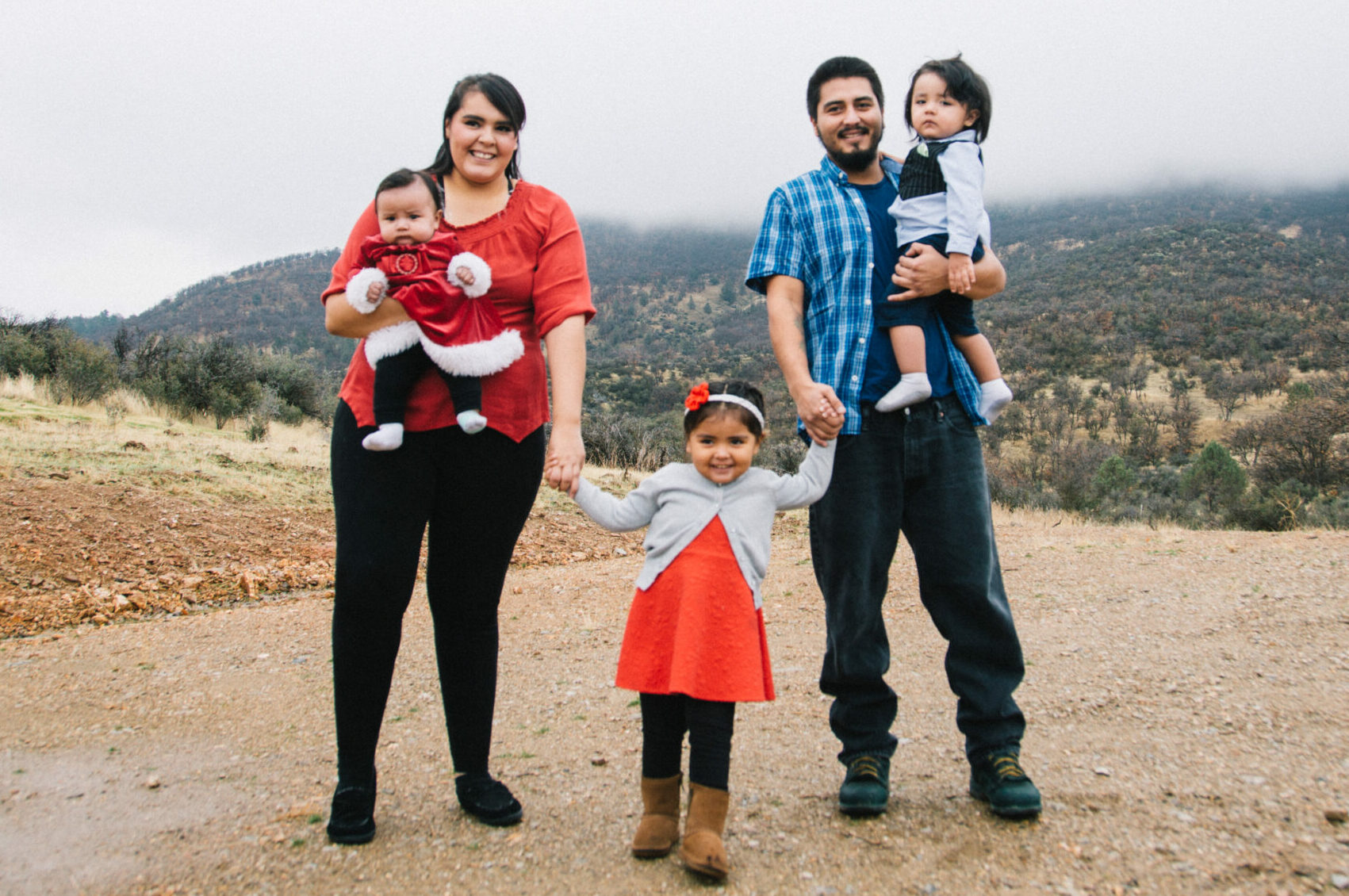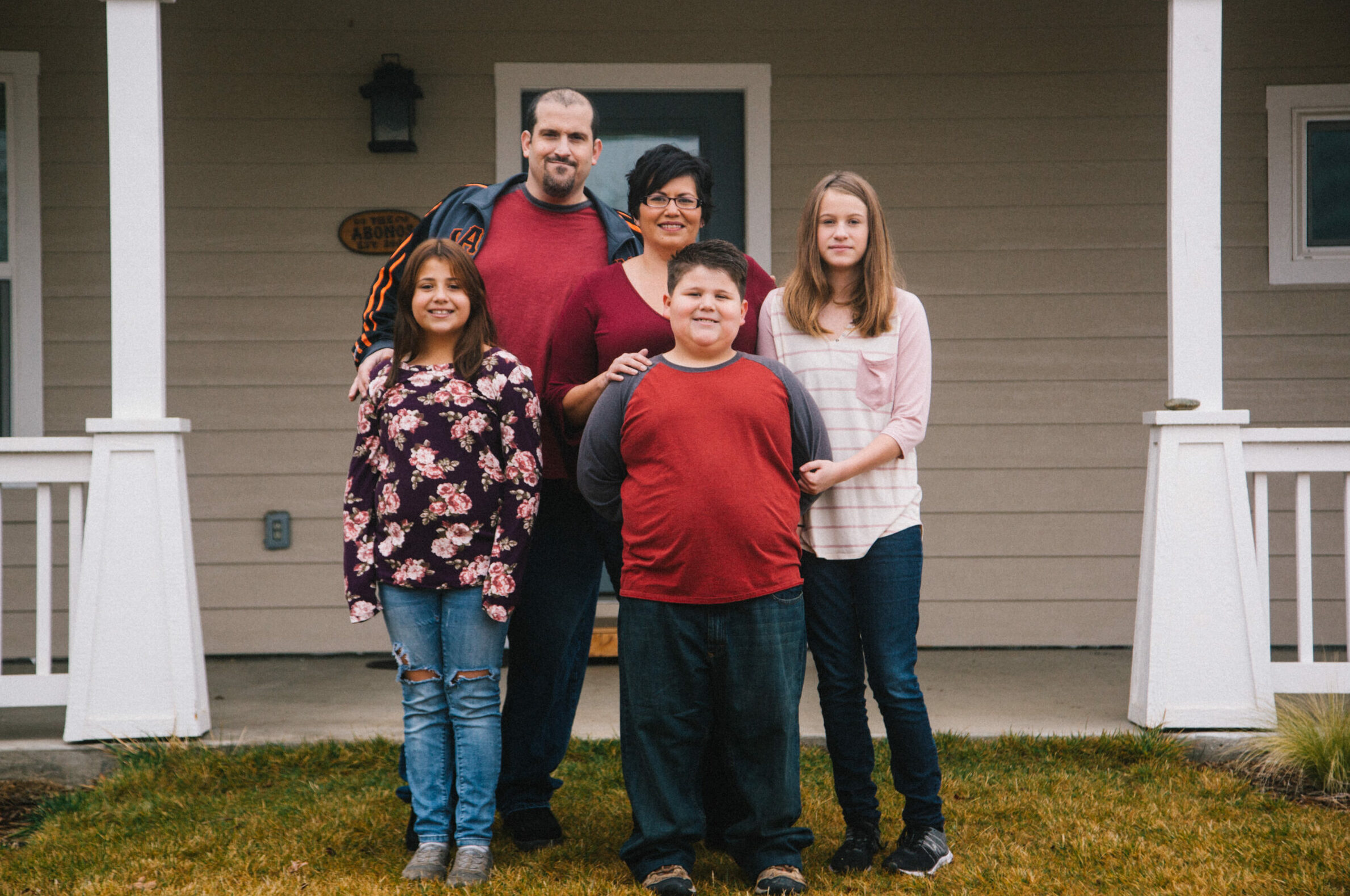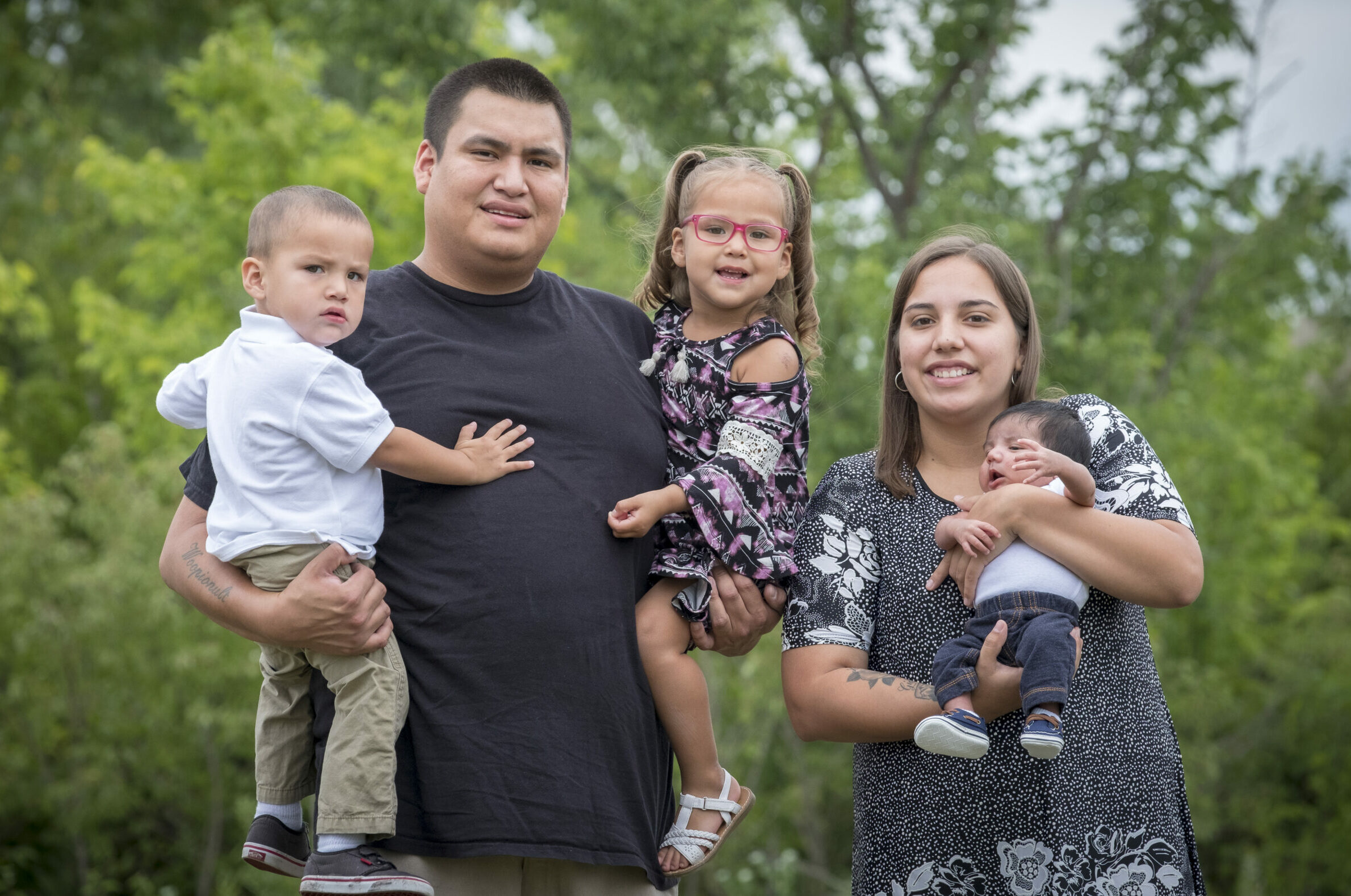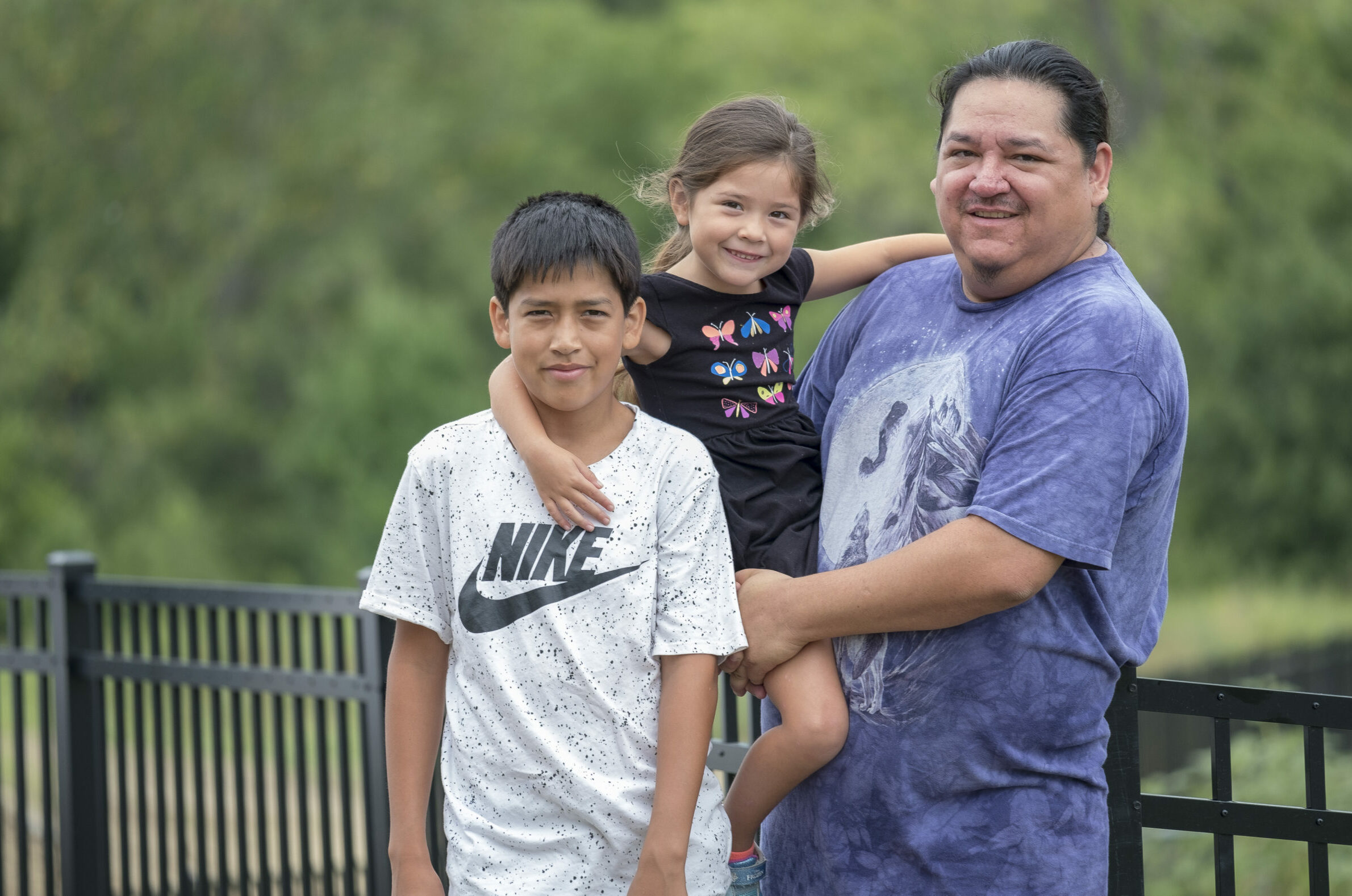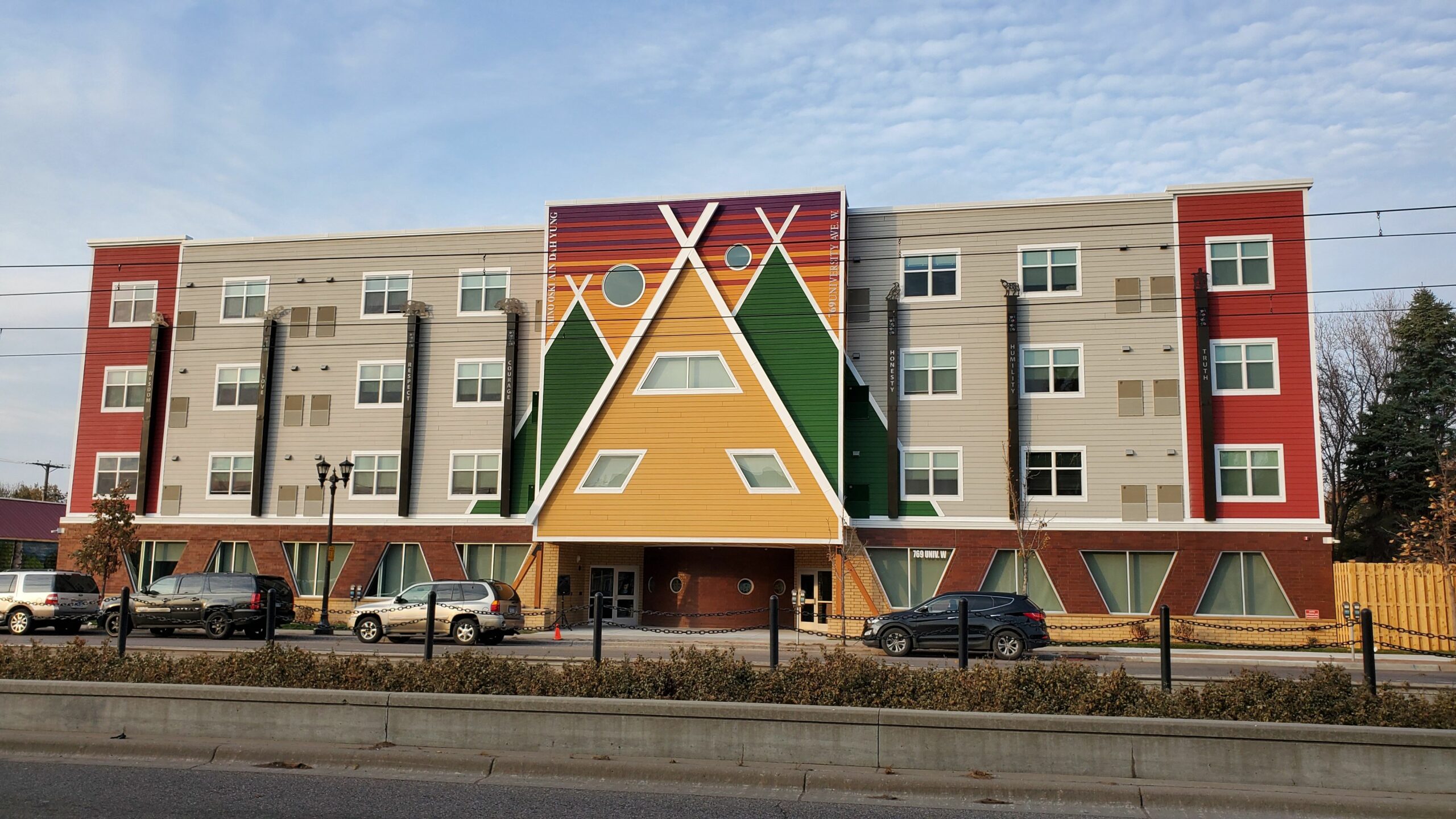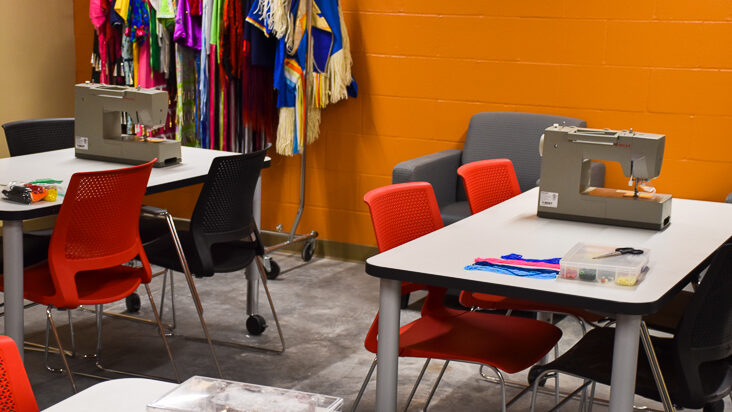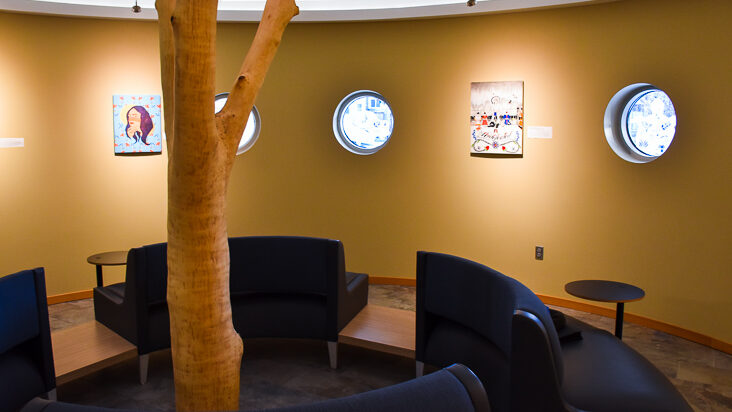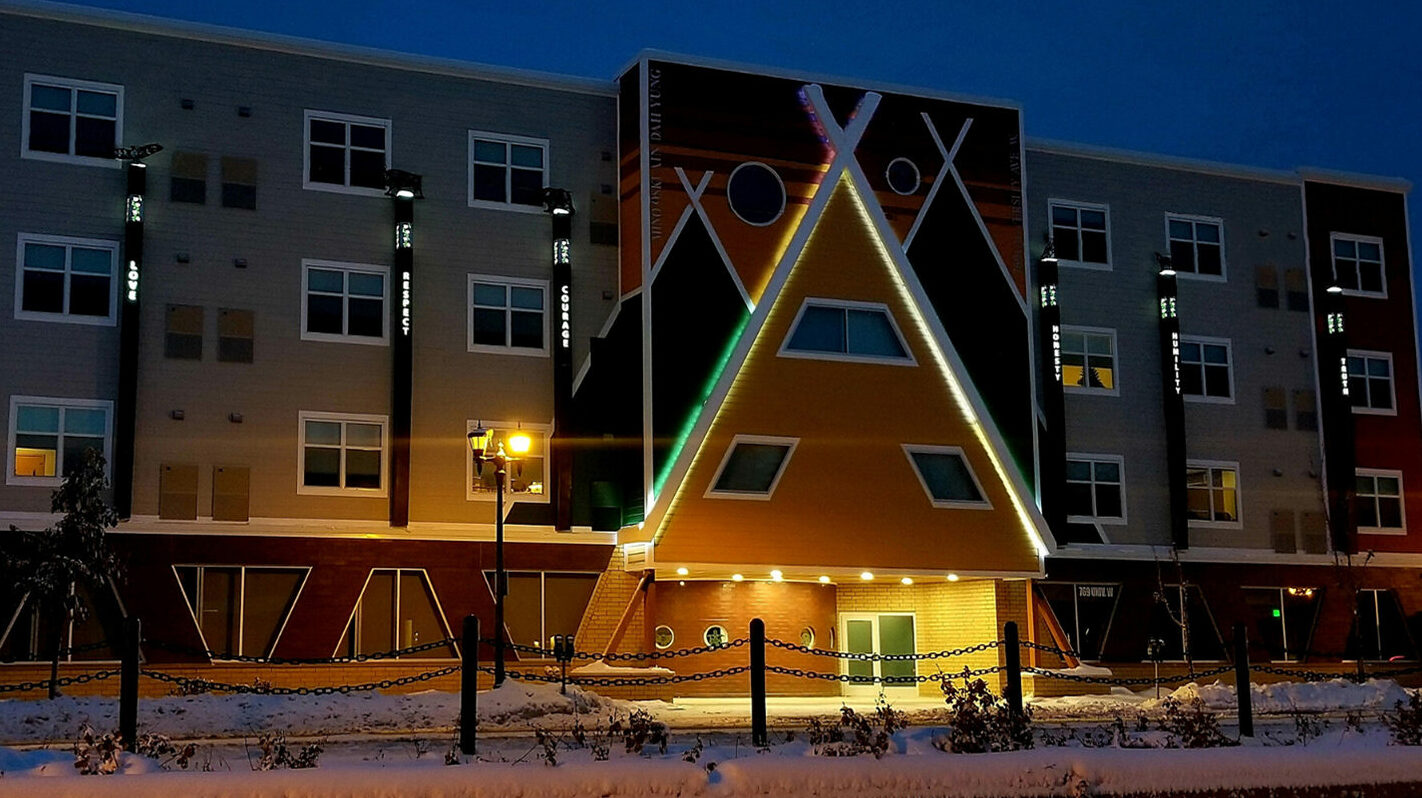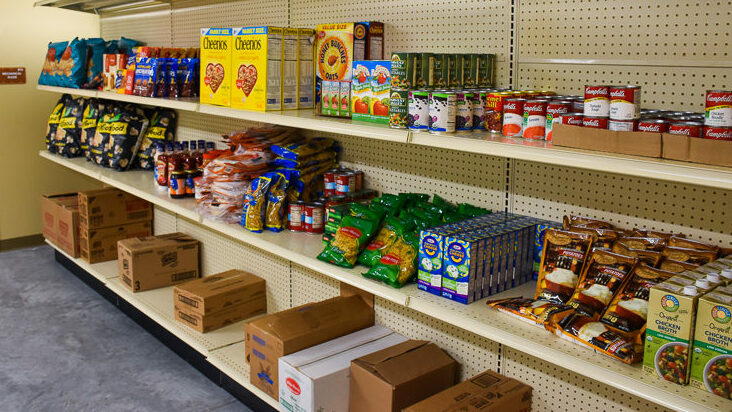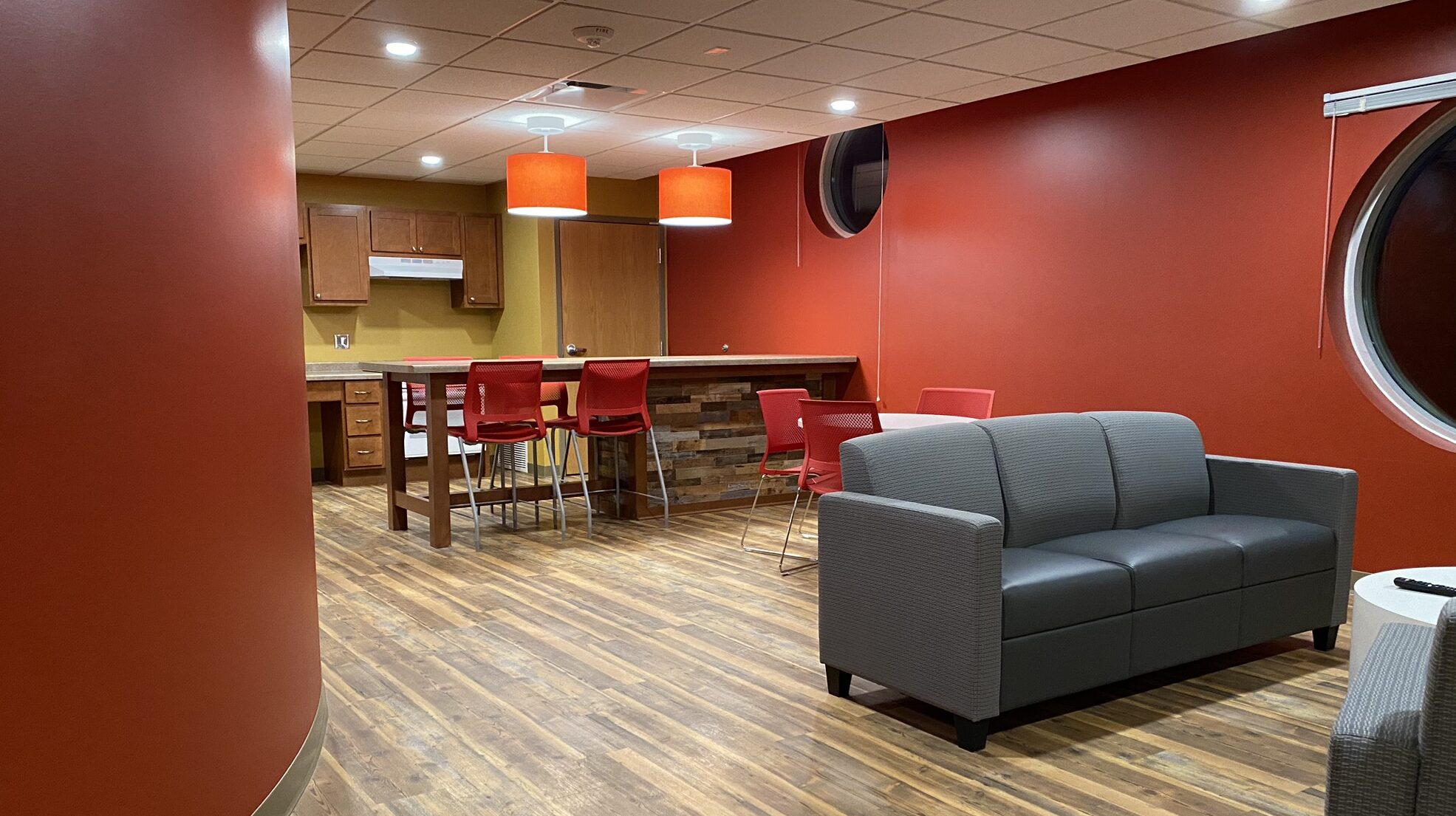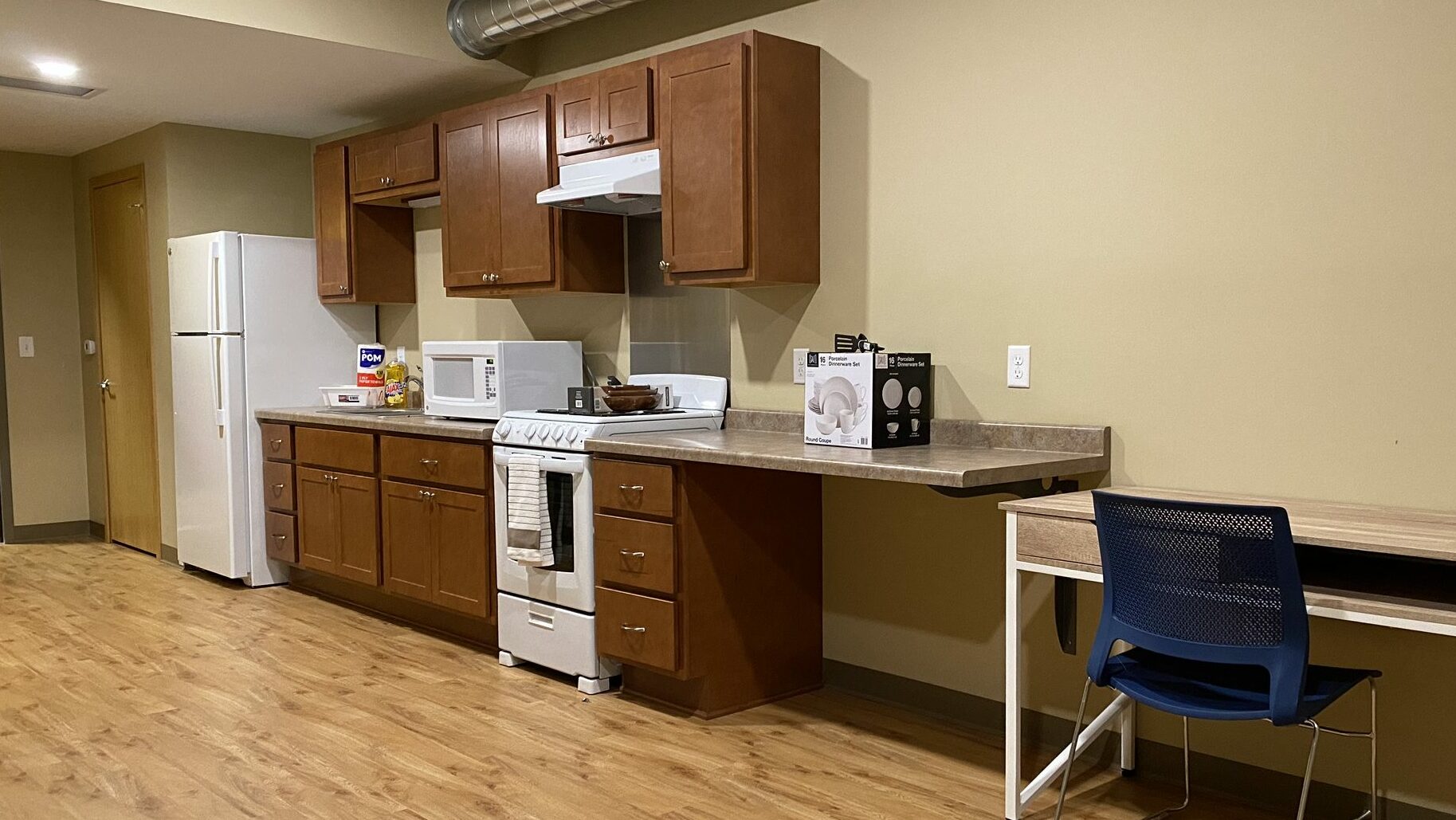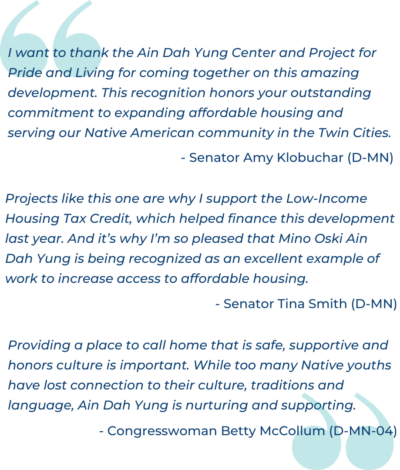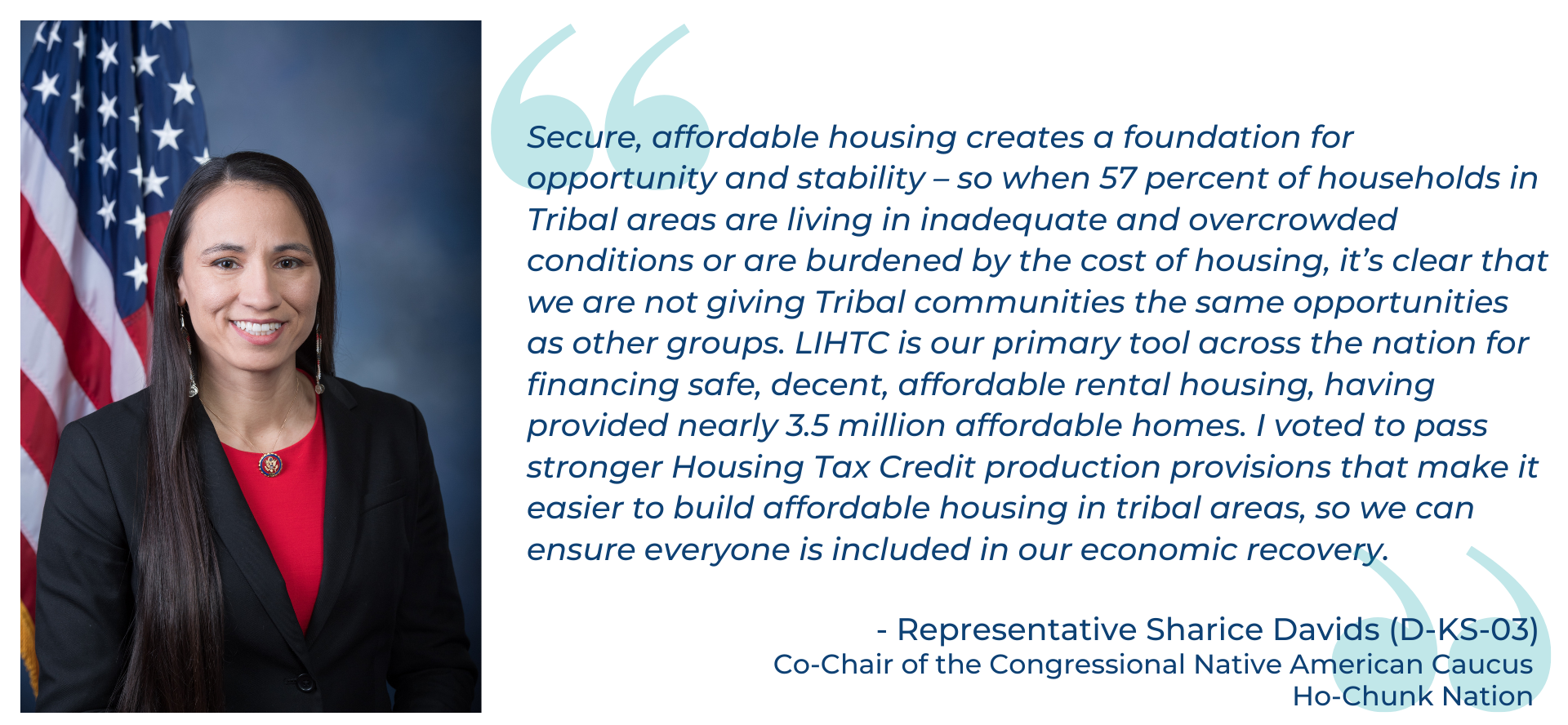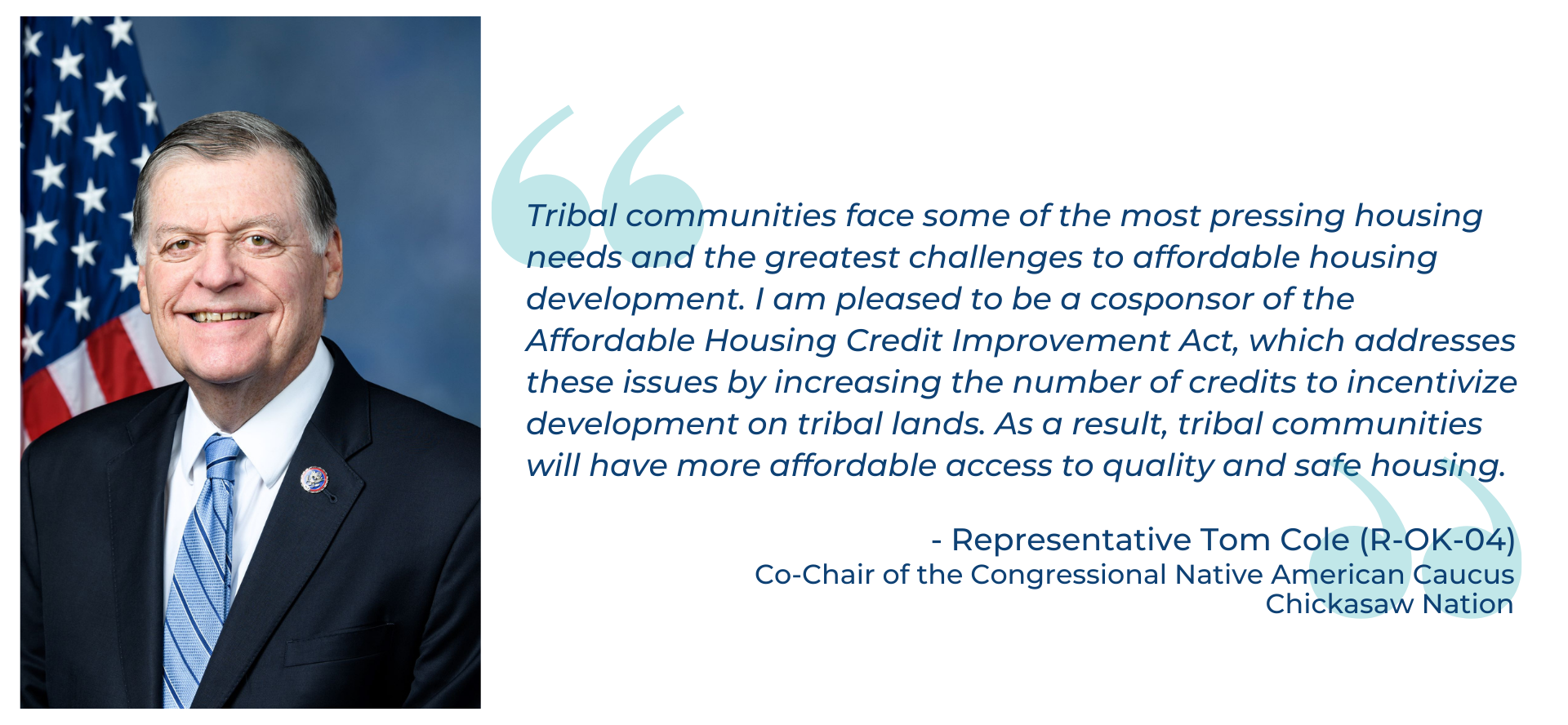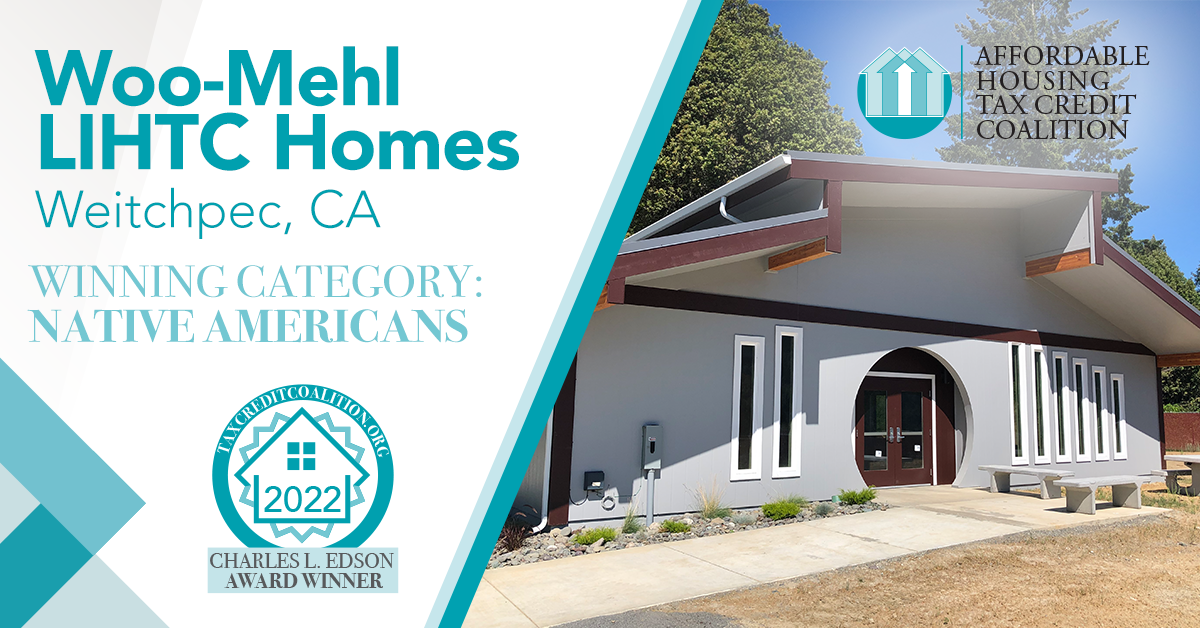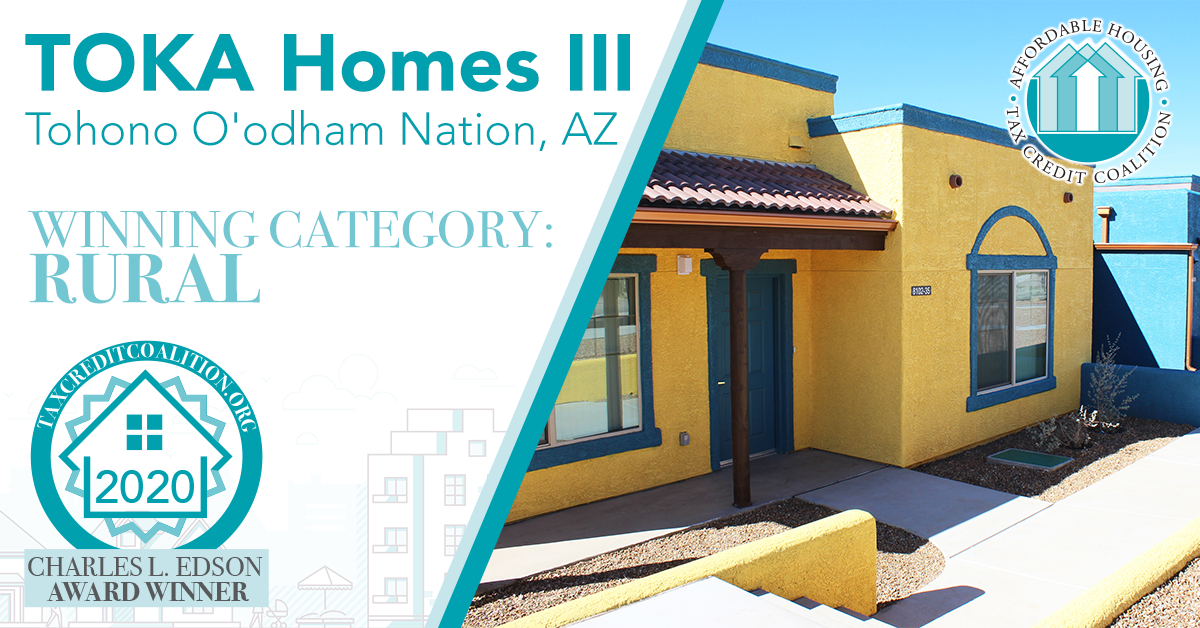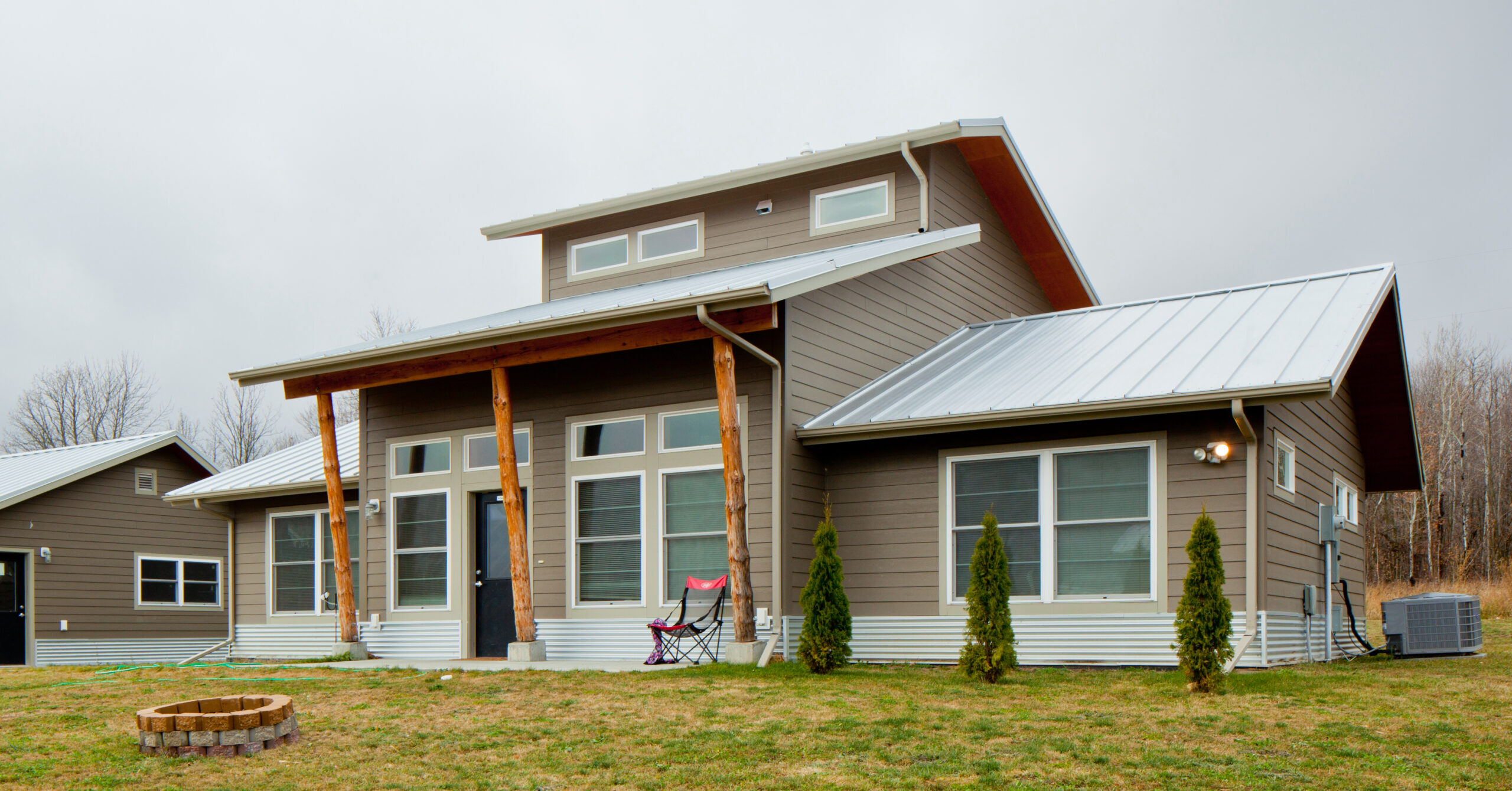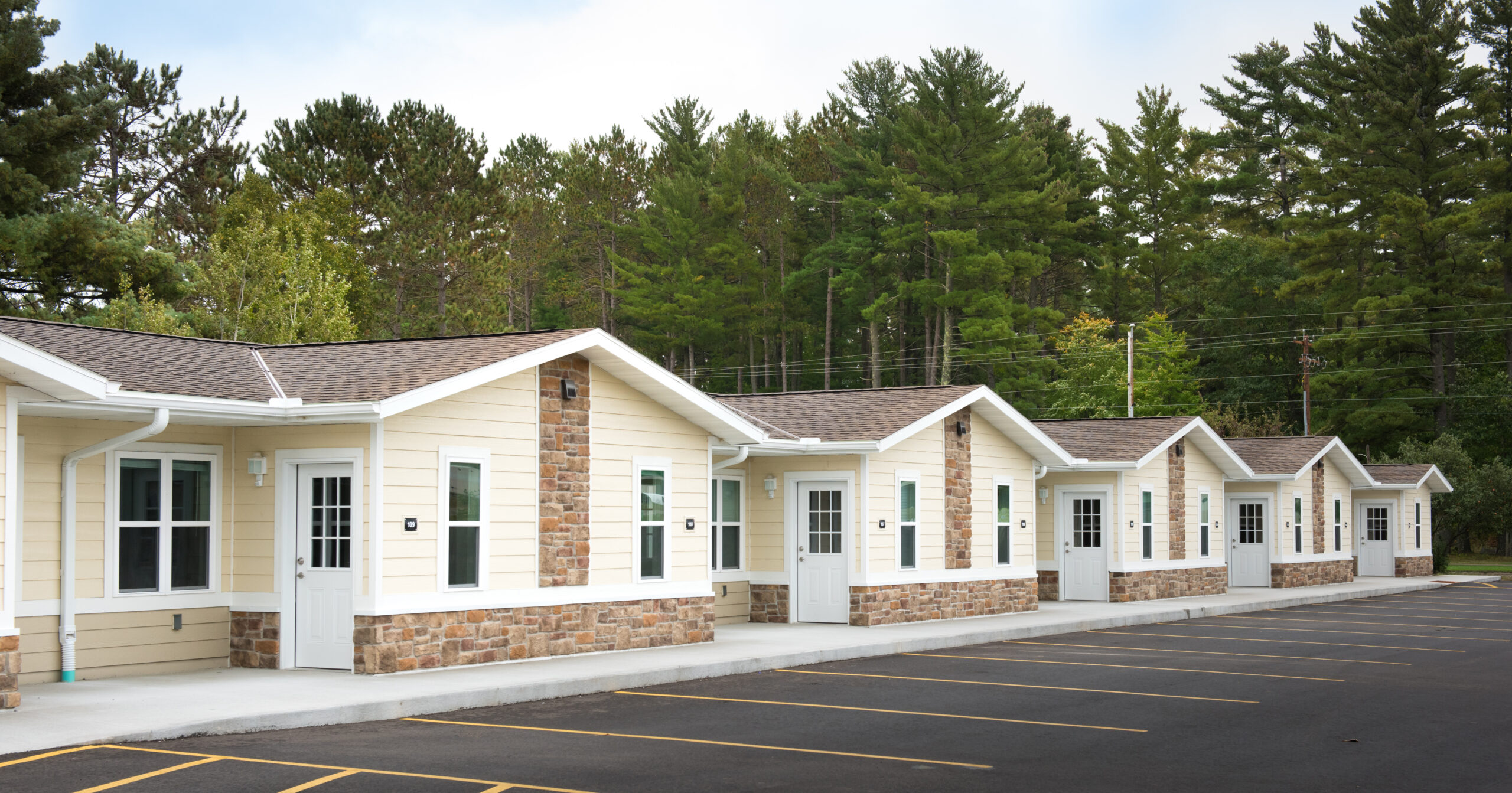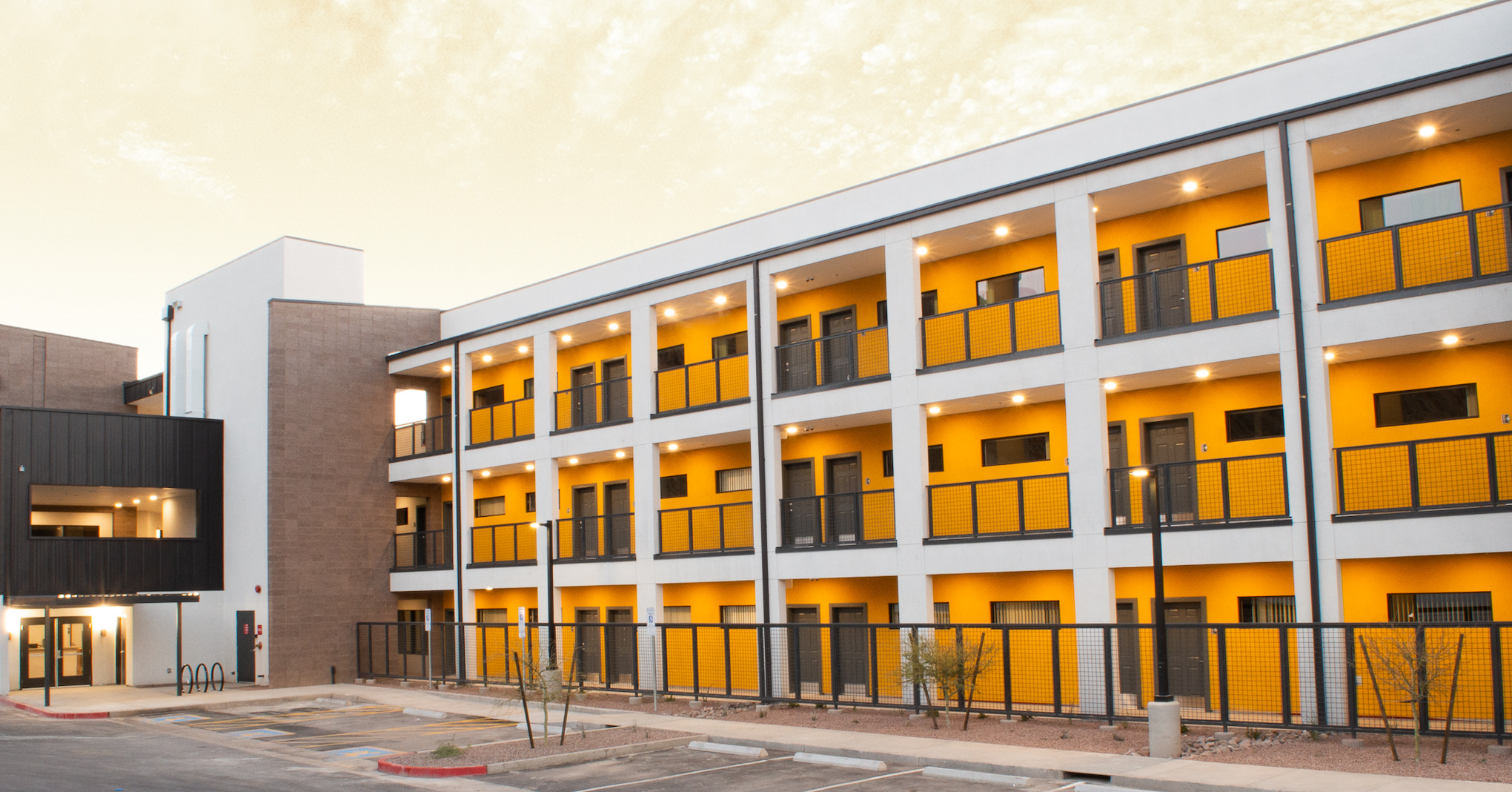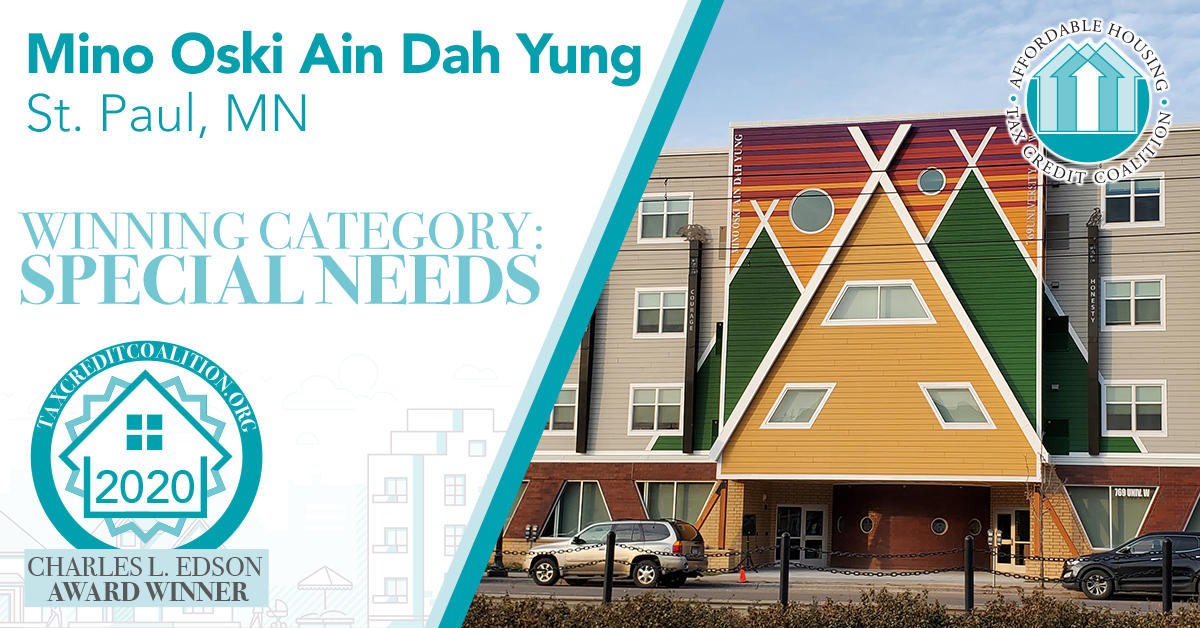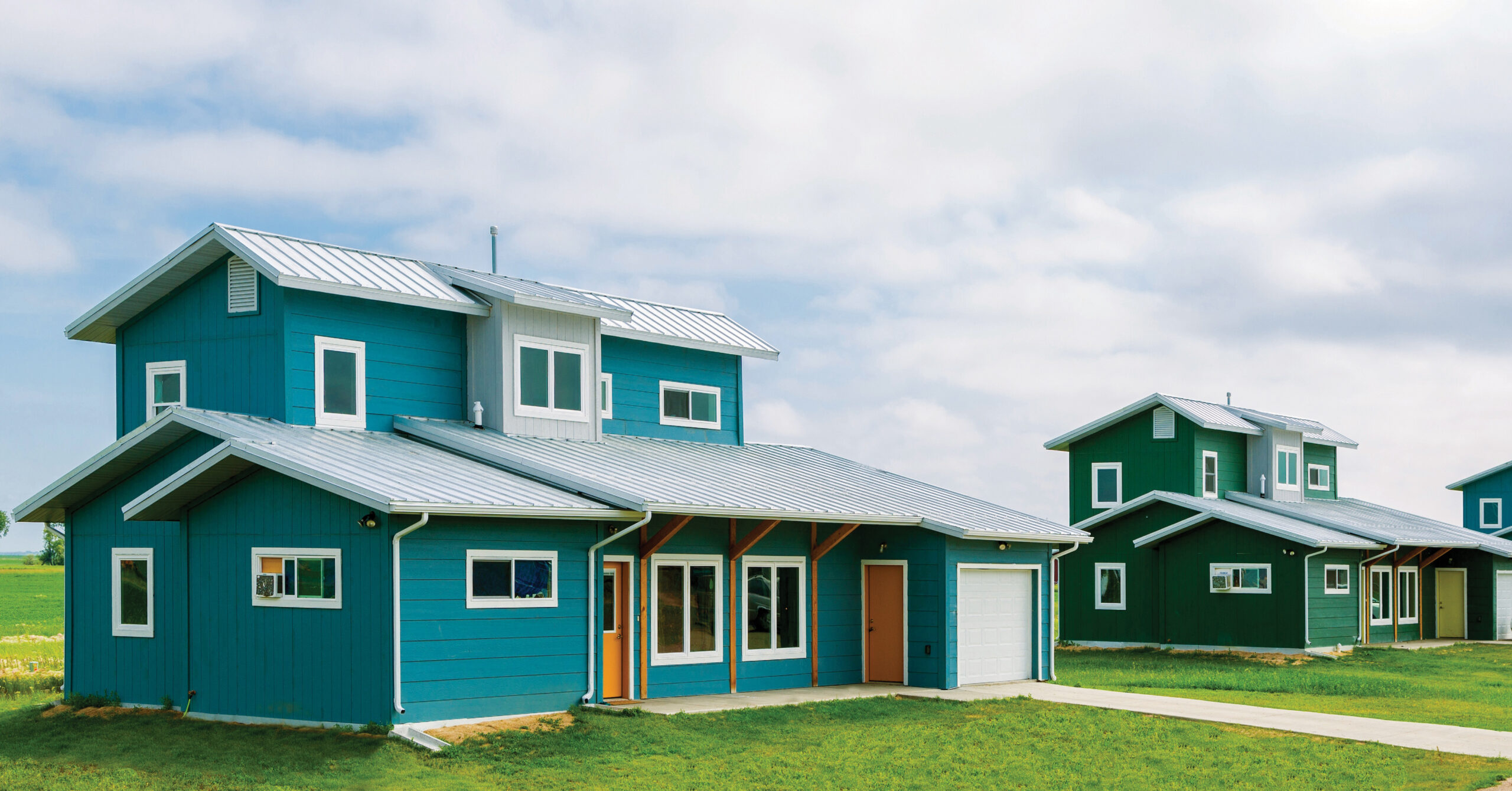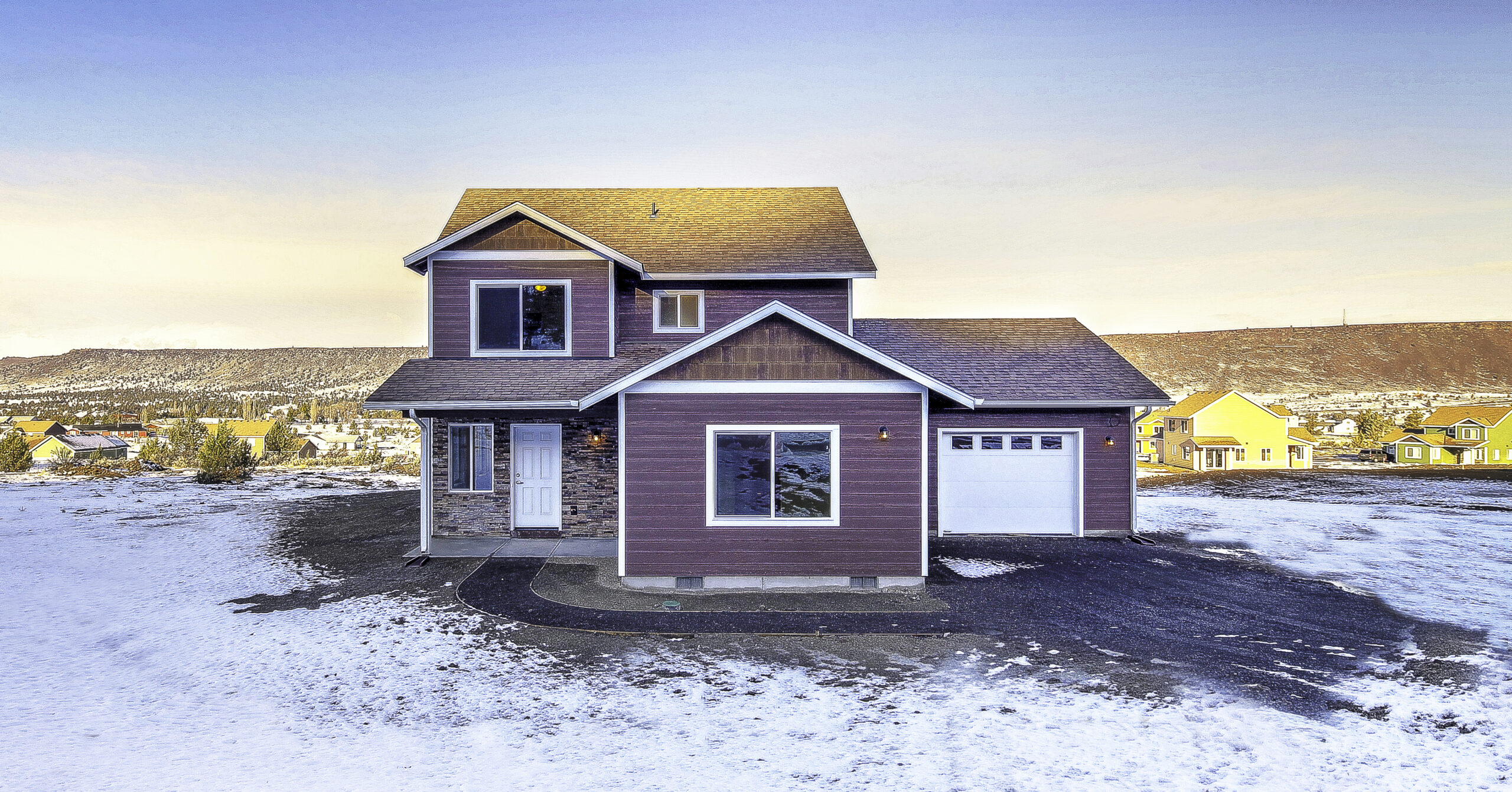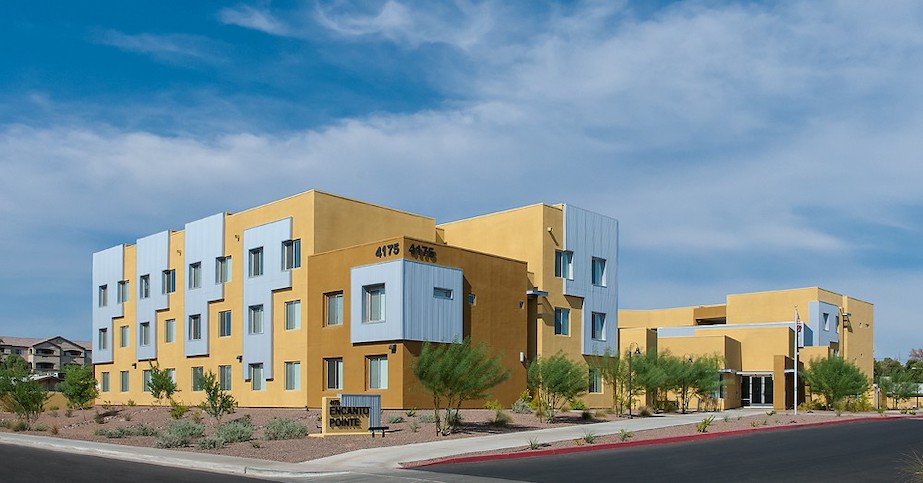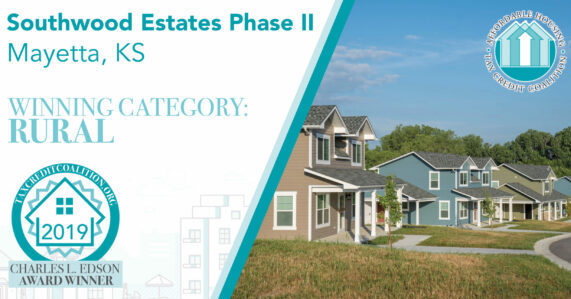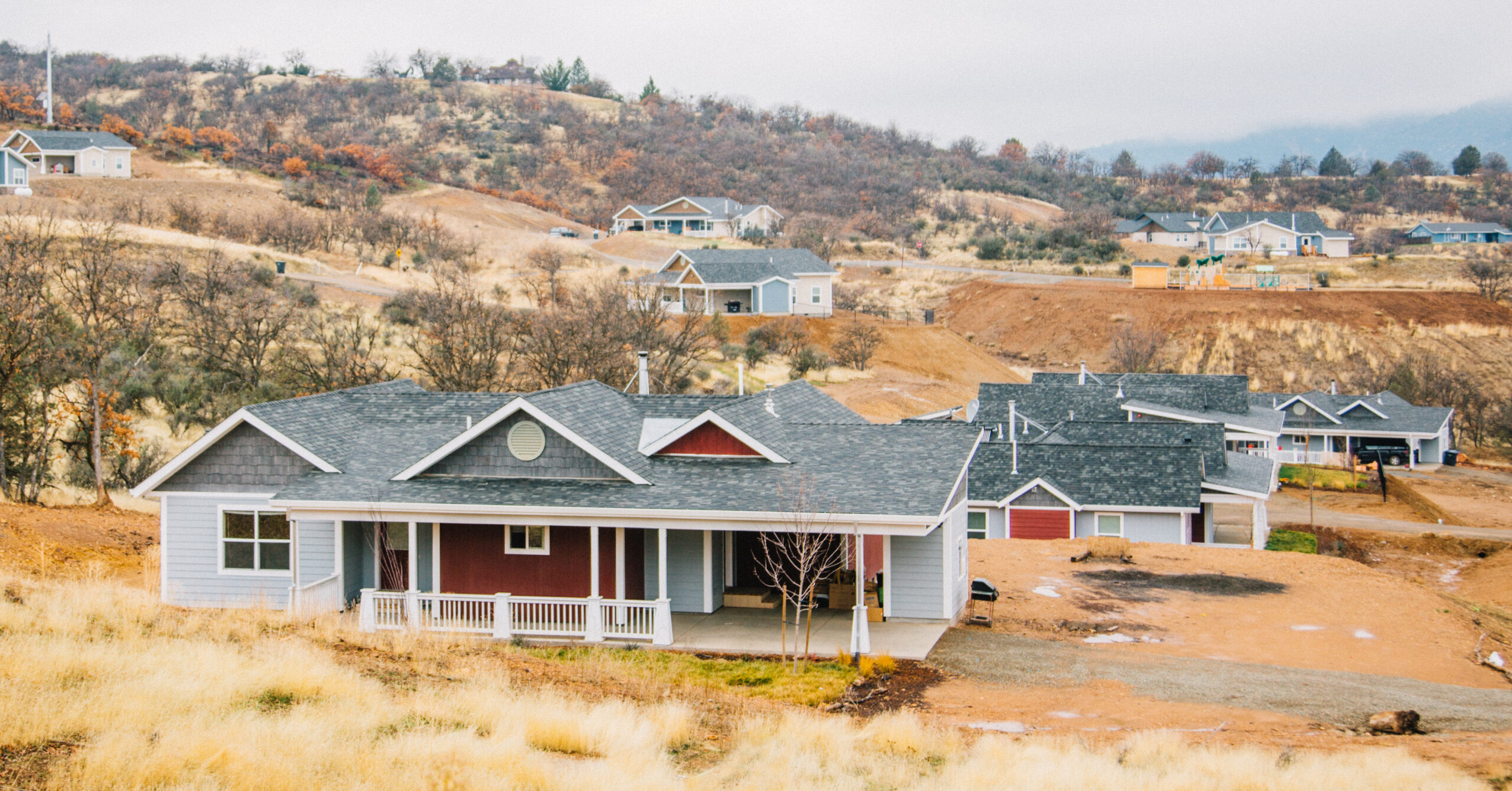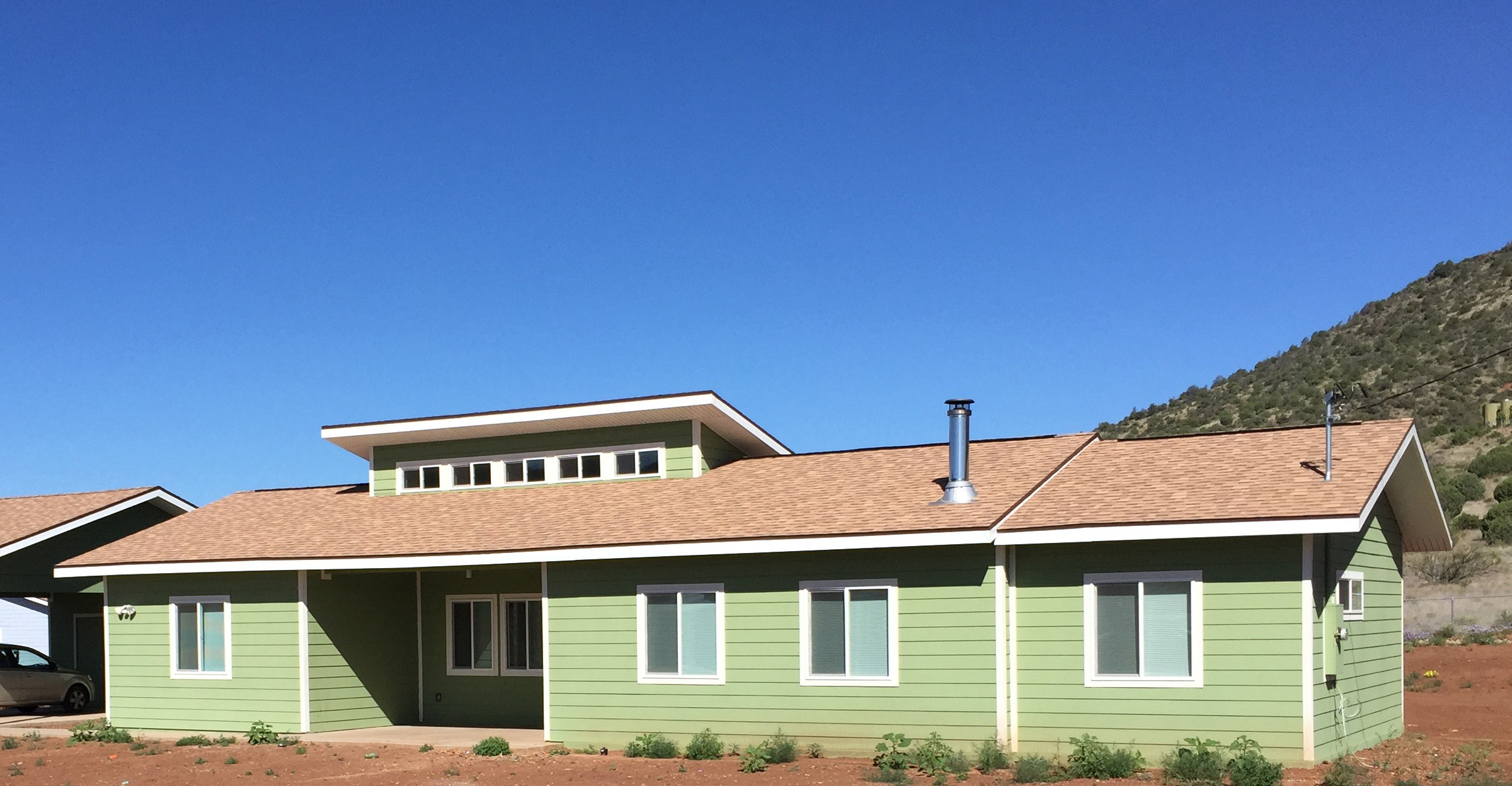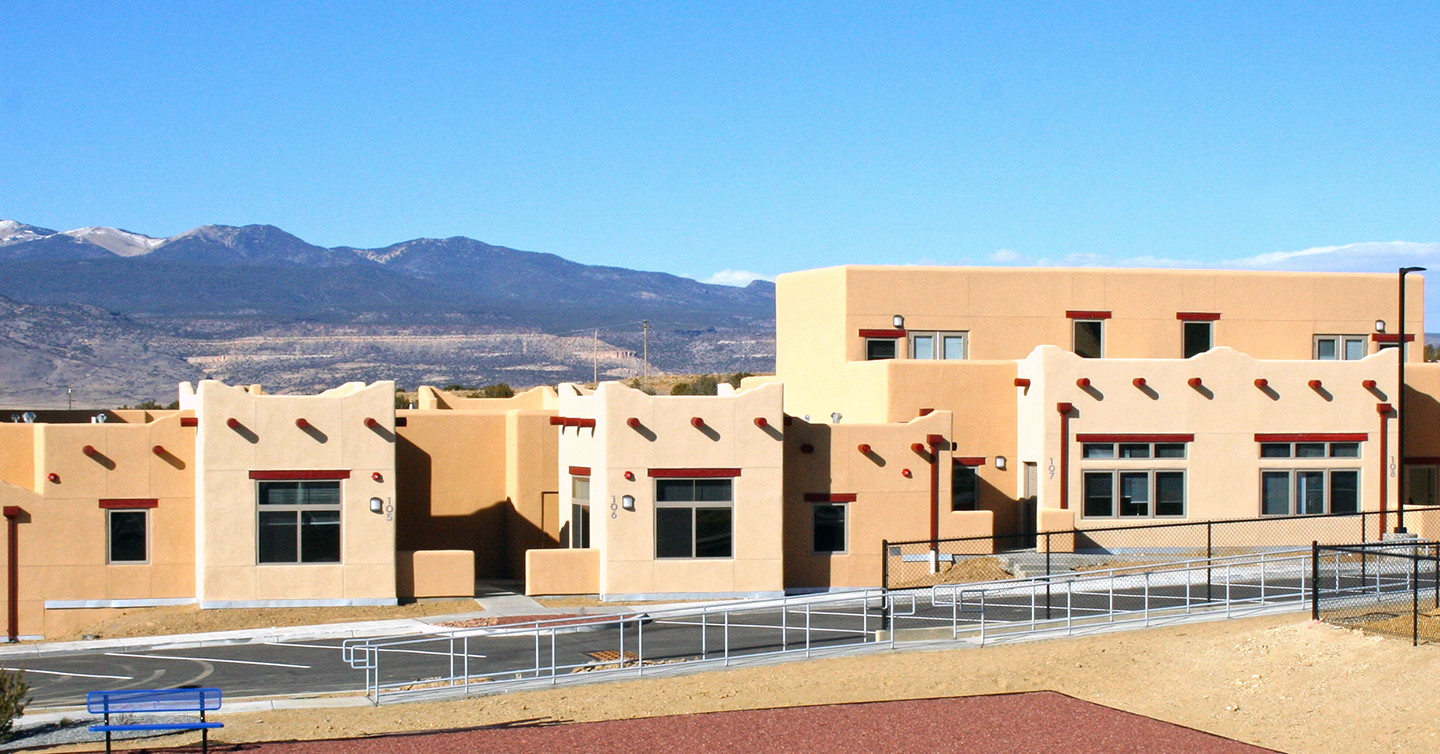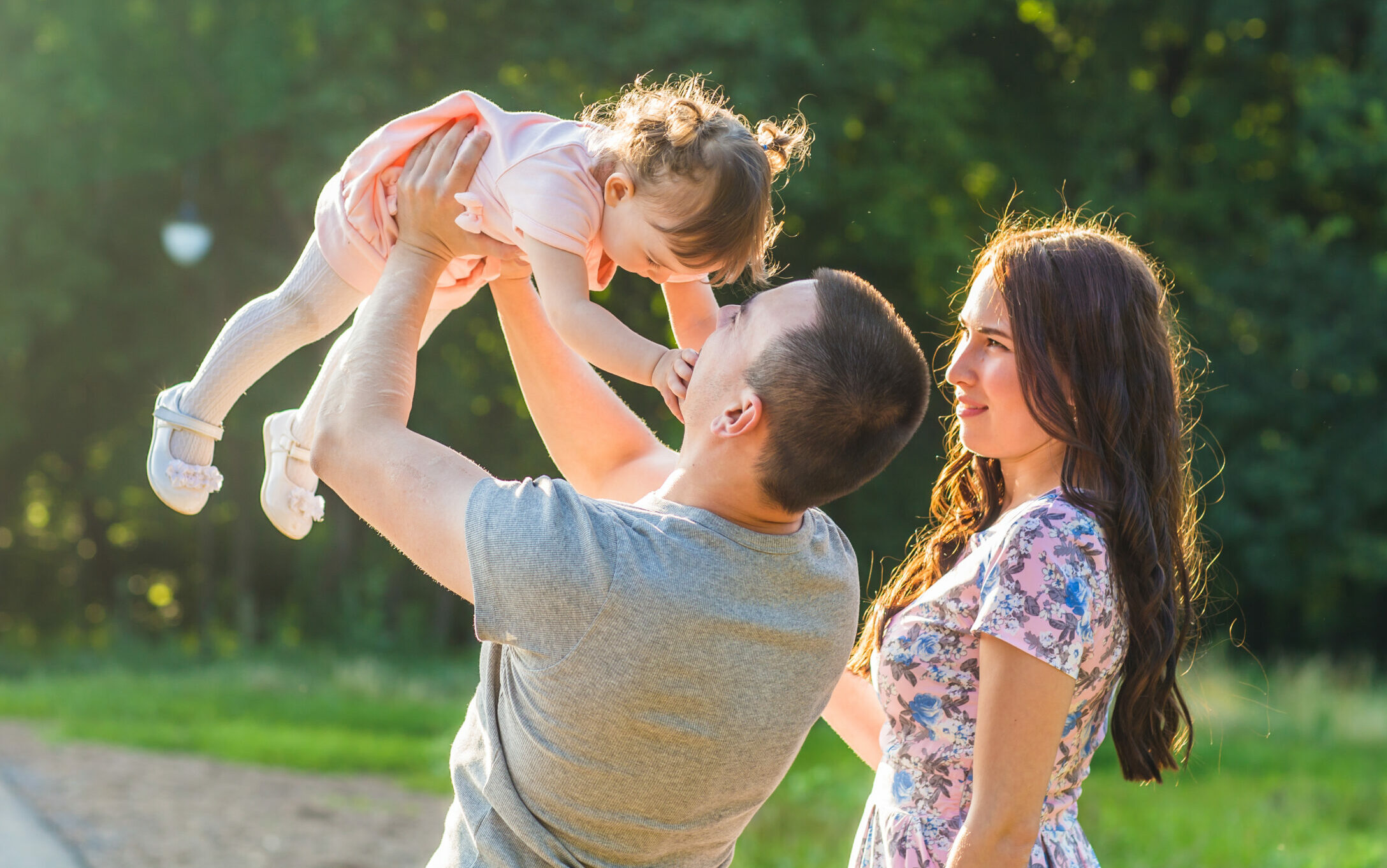 Native Americans in tribal areas have some of the most urgent affordable housing needs nationwide. In total, 57 percent of Native American households in tribal areas are burdened by the cost of housing, or live in housing with poor conditions or overcrowding. Housing on tribal land is 4 times more likely to have plumbing or kitchen appliance deficiencies and 120 times more likely to have heating deficiencies compared to housing elsewhere. Additionally, sixteen percent of households in tribal areas live in crowded conditions, compared to two percent nationwide.
Native Americans in tribal areas have some of the most urgent affordable housing needs nationwide. In total, 57 percent of Native American households in tribal areas are burdened by the cost of housing, or live in housing with poor conditions or overcrowding. Housing on tribal land is 4 times more likely to have plumbing or kitchen appliance deficiencies and 120 times more likely to have heating deficiencies compared to housing elsewhere. Additionally, sixteen percent of households in tribal areas live in crowded conditions, compared to two percent nationwide.
While the one in five Native Americans living in tribal areas have lower incomes than Native Americans living in urban areas, nationwide Native Americans have twice the overall poverty rate (23 percent compared to 11 percent nationwide), and a median household income of just $45,000, compared to nearly $66,000 for the overall population. As a result of lower incomes and the shortage of affordable housing, 23.5 percent of Native American renters spend more than 50 percent of their income on rent, leaving little leftover for other necessities.
The Low-Income Housing Tax Credit (Housing Credit) is a key solution to help address the vast and growing need for affordable homes for our nation’s indigenous people. Since 1986, the Housing Credit has served as our country’s primary tool to finance the production and preservation of affordable housing, resulting in nearly 3.5 million affordable homes. The Affordable Housing Credit Act, broadly supported, bipartisan legislation to expand and strengthen the Housing Credit, would provide over 2 million more affordable homes nationwide, helping us to ensure all Native Americans have access to safe, stable and affordable housing.
Hear from Native Americans who live in Housing Credit properties, see support from members of Congress, and explore examples of affordable housing for Native Americans across the country below.

